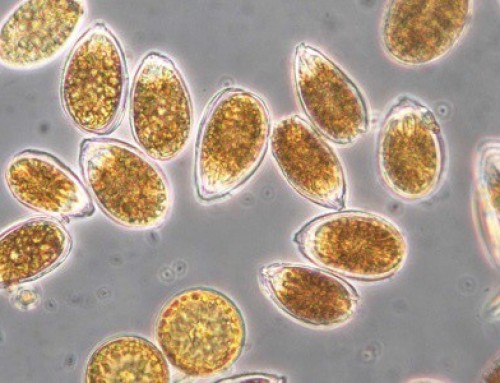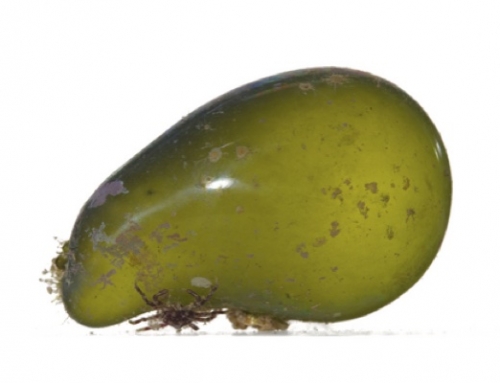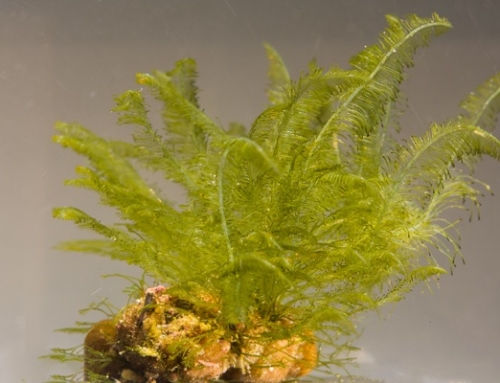Unos vecinos indeseables.
Que pasan completamente desapercibidos hasta que es demasiado tarde. Los gusanos polyclad o policládidos son un tipo de gusano plano que normalmente viene con malas intenciones.
Este curioso nombre hace referencia a su característica red interna de cavidades gastro-vesiculares (poly-clad) unidas todas ellas a su boca, lo que les permite repartir en todo su cuerpo el alimento que van ingiriendo. Esto explica la asombrosa capacidad que tienen para camuflarse ya que cuanto más tejido ingieren de su víctima, más se parecen a ella.
Taxonómicamente hablando, el orden de los gusanos polyclad se divide en dos subórdenes: los cotylea y los acotylea, dependiendo de la presencia o no de un órgano succionador. Todos ellos tienen una característica común: son depredadores muy especializados y tal vez por ello también muy eficientes. Los más habituales y principal motivo de preocupación en nuestros acuarios son los llamados AEFW, acrónimo de «gusano plano devorador de acroporas» (amakusaplana acroporae), aunque tampoco resulta infrecuente encontrar otro pequeño canalla especializado en vaciar las conchas de nuestros apreciados caracoles.
De todos los tamaños.
Los polyclad pueden ser desde apenas visibles hasta tan grandes como una mano aunque suelen ser peores los pequeños precisamente por la dificultad que entraña localizarlos. Un ejemplo de ello es la amakusaplana acroporae (AEFW) que raramente sobrepasa los 12 mm de longitud y puede ser tan pequeña como la cabeza de un alfiler. Su pequeño tamaño y capacidad de mimetismo hace que no las detectemos hasta que ya es demasiado tarde y han colonizado todo el acuario.

Siguiendo con este simpático animal que tiene como dieta única el tejido de las acroporas, se ha averiguado que su piel transparente permite ver el contenido de las vesículas repartidas por todo su cuerpo, las cuales al llenarse del tejido que va comiendo le proporcionan un color idéntico al del coral por lo que es casi imposible verlos. No obstante existen dos maneras bastante eficaces para saber si una acropora está infectada:
- Sacar el coral fuera del agua y dejarlo que se seque durante unos minutos. El gusano es incapaz de segregar la misma baba que el coral por lo que se nota un cambio de brillo que lo delata. Es un parásito nocturno, de día hay que buscar bajo las ramas y especialmente en sus entronques.
- Preparar un «dip desinfectante» con Betadine, Lugol, Coral-RX, Coral Protect, Levamisol o cualquiera de los muchos productos existentes. Se sumerge la acropora durante durante unos pocos minutos (dependerá del producto utilizado pero suele ser suficiente con dos o tres minutos) y se agita vigorosamente en el agua. Si hay alguna AEFW caerán al fondo y al cabo de un tiempo morirán.
Si se detecta una sola planaria es importante que pongamos el coral en cuarentena y repitamos el dip cada semana para romper su ciclo reproductivo. El motivo es que este polyclad se hace fértil a los pocos días de nacer (normalmente cuando alcanza los 4 o 5 mm de longitud) y colocará huevos (muy pequeños, de color ámbar) en la zona muerta más cercana al tejido de la acropora.

Estos huevos resisten perfectamente cualquier solución desinfectante y eclosionarán liberando cientos de diminutos y hambrientos canallas, por lo que hay que buscarlos cuidadosamente y retirarlos manualmente con mucha paciencia. Insisto en la importancia de poner el coral en cuarentena y seguir desinfectando porque con un solo huevo que se nos pase volverán a invadir el acuario. En esta imagen se pueden ver huevos de AEFW maduros y a punto de eclosionar.
Parásitos y depredadores muy especializados.
Veíamos en el anterior ejemplo que hay gusanos polyclad que actúan como parásitos muy activos de determinadas especies de coral. Los AEFW, como indica su acrónimo solo se alimentan del tejido de las acroporas. Por si esto fuera poco, tienen sus preferencias y no es común verlos en todas las especies de acroporas; sienten predilección por las acropora millepora, valida, yongei, formosa o latistella por poner algunos ejemplos y es más difícil encontrarlos en las acroporas «deepwater» como por ejemplo echinata, carduus o jacquelinae.
Pero no todos son parásitos, también hay depredadores y son más habituales de lo que nos gustaría. Un ejemplo de ello son gusanos polyclad especializados en comer gasterópodos.

Con un apetito insaciable.
Un gusano polyclad especializado en caracoles puede llegar a alcanzar un tamaño considerable y diezmar la población de los beneficiosos gasterópodos en pocos días. Al parecer son capaces de oler el rastro que dejan los caracoles al desplazarse y perseguirles por todo el acuario hasta darles caza. Una vez el caracol es alcanzado poco podrá hacer ya que el gusano insertará su probóscide y comenzará a absorber sus tejidos en un largo y cruel desenlace.
[sociallocker] Atacarán principalmente a caracoles que no dispongan de callum protector (la «tapa» rígida que tienen algunas especies y que les permite refugiarse en su concha y sellarla herméticamente) por lo que si empezamos a ver conchas vacías de trochus, strombus y nassarius podemos tener motivos para sospechar que algún polyclad los esté devorando.[/sociallocker]
La buena noticia es que estos gusanos polyclad no son tan prolíficos (salvo que haya muchos caracoles que sustenten una gran población) y morirán de hambre tan pronto como acaben con el último caracol del acuario.
No obstante, si queremos eliminarlos del acuario, la única opción es fabricar una trampa en forma de nasa (embudo invertido dentro de una botella de plástico por ejemplo) y colocar un cebo que podría ser un mejillón o almeja (suelen gustarles)
Hay muchas especies de gusanos polyclad y cada una tiene sus propias características, si bien una común: mejor lejos del acuario. En este artículo he hecho una breve descripción de los dos más habituales y de los mejores métodos para combatirlos.
Tal vez alguno de los lectores sienta cierta inquietud o preocupación, si es así considero el objetivo cumplido. Con estos canallas no te puedes relajar y es muy importante la detección precoz. Conozco varios casos de acuarios que han tenido que ser desmotados por no haber resuelto el problema a tiempo y espero que no te suceda a ti.





Saludos Monti. Yo los he tenido dos veces en dos acros diferentes. Al poco de adquirirlas, noté que algo estaba comiendo el tejido. Y ambos casos los combatí del.mismo modo. Solución de coral rx para eliminar los parásitos, y seguidamente, apliqué pegamento gel en la zona ya comida, para inmovilizar los huevos. No sólo elimine la amenaza, sino que en ambos casos, la acropora ha vuelto a regenerar tejido y recuperar la parte afectada.
En mi opinión este es uno de los peores parásitos que pueden entrar en un acuario. Si no se detecta y combate a tiempo como en tu caso,pueden ser devastadores.
También los he sufrido, los detecté en un par de acroporas las cuales tuve que esquejar y tirar las zonas afectadas y cubiertas de huevos. Saqué todas las piezas una a una para aplicarles un dip desinfectante, revisar y cepillar las zonas muertas. Todo este laborioso proceso en tres ocasiones. También introduje varias parejas de synchiropus y un hexataenia los cuales he visto depredar sobre este parásito en varias ocasiones (en especial los s. picturatus).
Varios meses después todas las acroporas están preciosas y no he vuelto a ver planarias, no obstante de vez en cuando saco piezas al azahar para revisarlas.